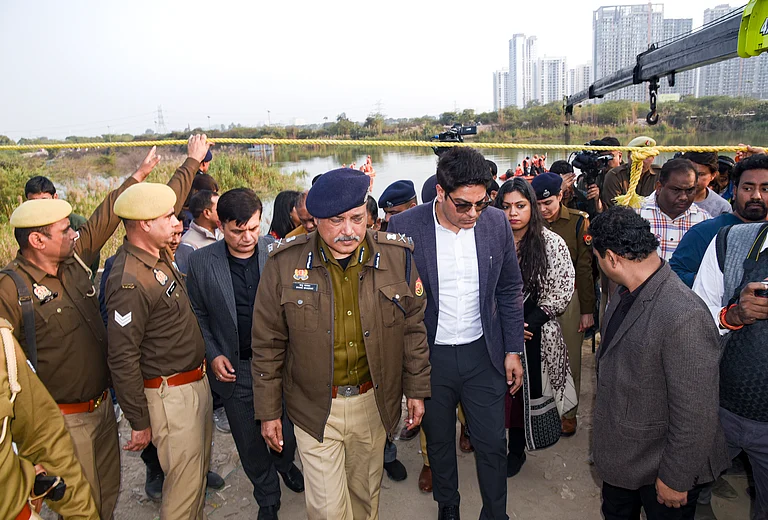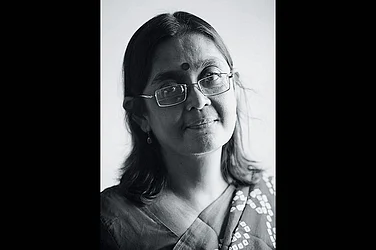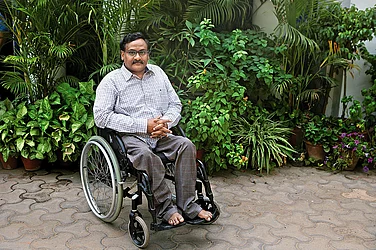“Aruna Shanbaug is a memory now, something that I do not want to remember because along with her memory comes her pain. Shanbaug was an important part of all of us at the King Edward Memorial (KEM) Hospital in Parel, central Mumbai,” says Anjali Parade, former sister in-charge of Ward Number 4. She, along with a team of 11 nurses, doctors and hospital staff, looked after Shanbaug—a nurse at KEM—who was paralysed and in a vegetative state following a heinous sexual assault at the hospital. The attack had left her blind and deaf too.
For 42 years, Shanbaug lay in a vegetative state, completely incapable of performing even the basic human activities. Every nurse who worked the shifts in Ward Number 4 of the hospital tended to her needs. They talked, laughed, read books to her and played music throughout the day in her room, the side-room of the ward. She was sponged and shifted from one side to the other every two hours to avoid bed sores. For over four decades, the nurses and the ancillary staff, who worked in the ward, were family to Shanbaug. That’s because she was abandoned in that condition by her relatives. When she passed away on May 18, 2015, at the age of 66, her skin was spotless despite the decades spent in bed.
The nurses would pool together their meagre resources and buy her comfortable cotton gowns, bed sheets and every other item a woman may need. “We knew that she would never recover. The attack was so brutal that we would get goosebumps whenever we looked at her lying on that bed getting frail each day. Yes, there were hospital gowns and bed sheets, but each of us wanted her to experience the comfort she may have got if she was normal. None of us had a lot of money then, but the doctors helped too,” says Parade.
“Aruna’s death took away a major part of work from our daily schedules. Our mornings began with her and ended with her. So it was heartbreaking to stop playing the music in her room. For many days, it was difficult for all of us to go there to take away all the belongings that had become hers. Despite her condition, she survived on strong willpower,” says Parade.
During her life on that hospital bed, Shanbaug had made many people famous—those who petitioned the Supreme Court for euthanising her; the ones who opposed the plea; and, those who cared for her. Her vegetative state saw the country’s first euthanasia plea and a heated debate on the right to life. The Supreme Court recognised passive euthanasia in Shanbaug’s case in 2011. It permitted the withdrawal of life-sustaining treatment for patients not in a position to make an informed decision.
The Aruna Shanbaug versus Union of India case was a crucial milestone in the legal history of the country, specifically in the context of euthanasia and the end-of-life care given to a patient in a vegetative and comatose state.
In November 1973, Shanbaug was assaulted by Sohanlal Bhartha Valmiki, a ward boy at the hospital. The sexual attack took place in the basement of the hospital when Shanbaug was changing her clothes. Valmiki had tied a dog chain to her neck and sodomised her when he realised that she was then menstruating. All through the assault, he had maintained a stranglehold on the chain around her neck. The next morning, a cleaner had found Shanbaug on the floor, seemingly lifeless and covered in blood. The heinous attack cut off the oxygen supply to her brain, making her deaf and blind, and left in a paralysed, vegetative state. Until her death, she remained in the same state.
When the petition was filed by journalist and writer Pinki Virani, the Supreme Court constituted a medical board of three well-known doctors to study and report on Shanbaug’s health and medical condition. The doctors had, in their report, stated that Shanbaug was not brain dead. She had responded to some situations in her own way, the doctors said. The doctors advised against euthanasia. Both the KEM Hospital as well as the Brihanmumbai Municipal Corporation (BMC) had opposed Virani’s plea for euthanasia for Shanbaug.
When Parade joined the KEM Hospital in 1975 as a trainee nurse, there were loud protests on the campus. The nursing and other staff were protesting within the complex against the decision of the hospital dean to shift Shanbaug to Sarvodhyay Hospital in Ghatkopar—in the eastern suburbs of Mumbai—where patients in her condition were kept for specialised care. “Everyone protested. The hospital overturned its own decision and Shanbaug stayed with us until her death. This was my first introduction to Aruna,” says Parade. After she had heard Shanbaug’s name, Parade went to the ward to “actually see” the patient. “When I saw her lying helplessly on that bed, a special bond developed between us. I wanted to look after her,” she says. Shanbaug was their celebrity resident—no one referred to her as a “patient”. She was always Aruna to them, remembers Parade.
“Nursing has changed so much. Now, it is all about job security. The patient load has increased and the nursing staff is overburdened with work. They are too tired to be bothered with doing a little extra like we had all done back then,” says Parade.
For the nurses, doctors and the ancillary staff, the decision to keep Shanbaug alive was a personal one. Their unsaid determination soon turned into a collective effort. “Even when the court was hearing the euthanasia case, none of us discussed it. We were firm that since Shanbaug was responding to us in many ways, she should not die without dignity. Her dignity was our dignity,” says another nurse who had worked back then.
According to Parade, Shanbaug was very traumatised by the sexual assault and would scream out loudly when she was being sponged. Her reflexes were very aggressive when someone touched her, recalls Parade. “We would hear these loud screams in the ward and in the corridor adjacent to the ward. We would know that Shanbaug was being sponged. Despite her vegetative state, we knew that she was going through hell. For each of us, her pain was our pain,” says Parade.
The media coverage and the euthanasia plea in the Supreme Court had made Shanbaug a known name across the country. The number of those who attended her funeral was testimony to this, says another nurse who served Shanbaug. The nurses, along with the dean, had taken a boat and immersed her ashes in the Arabian Sea near the Gateway of India. “Despite her condition and that too for so long, there was a positive energy in that room,” says Parade.
There is a photograph of Shanbaug mounted on a wall in KEM Hospital, but there is no memorial. “The photograph is a reminder that women need safer work spaces. It is also a reminder that the most brutal attack took place here, which was her work place,” says another nurse.


























